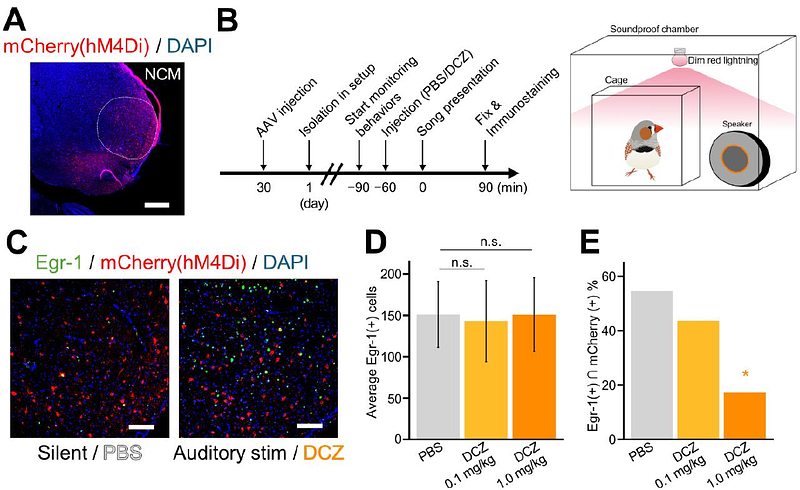High-Throughput Assessment of Vocal Modulation Following Chemogenetic Inhibition in Songbirds

High-Throughput Assessment of Vocal Modulation Following Chemogenetic Inhibition in Songbirds
Song, C.; Fujibayashi, M.; Abe, K.
AbstractChemogenetic tools that enable temporary and repeatable manipulation of neuronal activity have become essential for studying the precise neural underpinning of animal behavior. However, their application has so far been limited to songbirds, which are widely used to study behaviors related to vocal communication. In this study, we applied and evaluated designer receptors exclusively activated by designer drugs (DREADD)-mediated neural suppression in songbird\'s brains, focusing on its impacts on vocalizations. We found that neuronal activity in zebra finches (Taeniopygia guttata) can be effectively suppressed both in vitro and in vivo using the inhibitory DREADD by its ligand deschloroclozapine (DCZ). By establishing a high-throughput system for recording and analyzing their vocalizations, we systematically assessed the effects of DREADD-mediated suppression on song behavior. Inhibiting HVC in zebra finches led to a reduction in song production number for approximately 90 min and altered phonological features over a longer time course. Notably, the concentration of DCZ required to induce robust effects on song behaviors was higher than doses typically used in mice. Furthermore, suppression of HVC or Area X in Bengalese finches (Lonchura striata domestica) produced a distinct effect on song features, suggesting species-specific responses to chemogenetic intervention. These findings refine the use of chemogenetic tools in songbirds and provide new insights into the neural mechanisms underlying vocal communication.